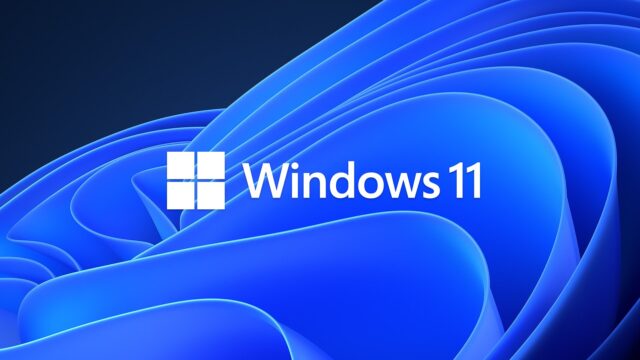
For years, iPhone users have grappled with a frustrating problem: seamlessly accessing and managing their photos on Windows PCs. Transferring photos felt clunky, iCloud integration was less than ideal, and the overall experience was far from smooth. But the tide has turned! Microsoft has finally addressed this long-standing issue with some significant updates, and the “iPhone-Windows” photo problem is finally fading into the past. Let’s dive into how Microsoft has bridged this gap and what it means for users.
The core of this improvement lies in two key areas: enhanced integration with iCloud Photos and the revamped Photos app in Windows 11. While these solutions aren’t brand new, recent updates have significantly improved their functionality and reliability, making them viable solutions for everyday use. This is a game-changer for iPhone owners who rely on Windows for their work or creative tasks. No more emailing photos to yourself or fiddling with third-party apps!
iCloud Photos Integration: Seamless Syncing at Last
iCloud Photos has always been the go-to for backing up and syncing photos across Apple devices. However, its integration with Windows was previously a major pain point. Users often complained about slow sync speeds, unreliable performance, and a cumbersome interface.
Microsoft tackled these issues head-on by deeply integrating iCloud Photos into Windows 11. Here’s how it works now:
- Native App: Instead of relying on a clunky web interface, Windows 11 now has a dedicated iCloud Photos app available in the Microsoft Store. This app provides a familiar and user-friendly experience for browsing, managing, and downloading photos from your iCloud library.
- File Explorer Integration: You can access your iCloud Photos directly through File Explorer, just like any other folder on your PC. This allows for easy drag-and-drop functionality and seamless integration with other Windows applications.
- Improved Performance: Microsoft has significantly improved the sync speeds and overall reliability of iCloud Photos on Windows. Photos now sync quickly and efficiently, and users report far fewer issues with missing files or failed uploads.
The Revamped Photos App: A Central Hub for All Your Images
The built-in Photos app in Windows 11 has also undergone a major overhaul, making it a more powerful and versatile tool for managing your entire photo collection, including those from your iPhone.
Here’s what’s new:
- Improved Interface: The Photos app now features a clean and modern interface that makes it easy to navigate and organize your photos.
- Powerful Editing Tools: The app includes a range of built-in editing tools, allowing you to crop, rotate, adjust colors, and apply filters to your photos. You can even make basic video edits.
- Integration with Other Apps: The Photos app seamlessly integrates with other Windows apps, making it easy to share photos, create presentations, or use them in other projects.
- iCloud Photos Support: The Photos app can now directly access and display photos from your iCloud library, further streamlining the experience for iPhone users.
Beyond Photos: A More Connected Ecosystem
These improvements go beyond just photos. Microsoft’s efforts to improve integration with Apple devices are part of a broader strategy to create a more connected and user-friendly ecosystem. This includes:
- Phone Link: The Phone Link app (formerly “Your Phone”) allows you to connect your iPhone to your Windows PC and access messages, notifications, and even make calls directly from your computer.
- Windows Subsystem for Android: This feature allows you to run Android apps on your Windows 11 PC, opening up a whole new world of possibilities for cross-device compatibility.
While these features don’t directly address the photo transfer issue, they contribute to a more seamless experience for iPhone users on Windows. Microsoft seems to be acknowledging the reality that many people use both Apple and Windows devices and is actively working to make that experience as smooth as possible.
The Impact: A Win for iPhone and Windows Users
Microsoft’s efforts to solve the “iPhone-Windows” photo problem have significant implications for users:
- Increased Productivity: Easier access to photos means less time wasted on transferring files and more time spent on actual work or creative projects.
- Improved User Experience: A smoother and more intuitive workflow enhances the overall computing experience for iPhone users on Windows.
- Greater Flexibility: Users now have more choices and flexibility in how they manage and access their photos across different devices.
These changes are a welcome development for anyone who uses both an iPhone and a Windows PC. By removing a long-standing frustration, Microsoft has made it easier for users to stay connected and productive, regardless of their device preference.
The Future: Even More Seamless Integration?
While the recent updates have significantly improved the iPhone-Windows photo experience, there’s always room for further enhancement. Here are some potential areas for future development:
- Live Photos Support: Currently, Live Photos from iPhones are displayed as static images on Windows. Adding support for playing Live Photos would further enhance the experience.
- iCloud Drive Integration: Deeper integration with iCloud Drive could allow for seamless access to other files and data beyond just photos.
- Enhanced Collaboration Features: Improved tools for sharing and collaborating on photos across Apple and Windows devices could further boost productivity.
Microsoft’s commitment to improving cross-device compatibility is a positive sign. As technology continues to evolve, we can expect to see even more seamless integration between Apple and Windows ecosystems in the future.
Source.


















